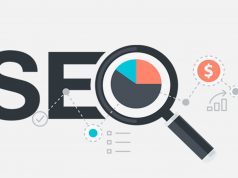When developing chatbot solutions for businesses, the selection of technologies plays a crucial role in ensuring smooth integration into the existing ecosystem and facilitating future development. It is essential to familiarize yourself with the technologies employed in chatbot development to determine the necessary expertise required for your project. By understanding these technologies, you can make informed decisions and assemble the appropriate team of experts for your chatbot project.
Node.js for Chatbot Development
Node.js is often a choice for chatbot development thanks to its scalability, real-time communication capabilities, and rich package ecosystem. It utilizes non-blocking I/O operations and an event-driven architecture, making it highly efficient for handling multiple requests. This is particularly beneficial for chatbots that need to handle numerous user interactions simultaneously.
Since Node.js utilizes JavaScript, this allows for seamless integration with front-end web applications and simplifies the sharing of code and modules between the server-side and client-side components of a chatbot.
As was said, Node.js is known for its scalability. Its lightweight and event-driven nature makes it handle high-traffic loads and scale horizontally across multiple servers if needed. Plus, Node.js experts can help you implement real-time communication scenarios, making it ideal for chatbots that require instant responses. Its ability to establish and maintain persistent connections allows for real-time updates and seamless integration with messaging platforms or APIs.
Python for Chatbot Development
Another highly popular option used in chatbot development is Python technology. Python provides a robust ecosystem, extensive NLP capabilities, versatility, scalability, and rapid development cycles. All these features make it an excellent choice for building chatbots with advanced language processing abilities.
Python is a versatile language that can seamlessly integrate with other technologies and platforms. It allows developers to integrate chatbots with various APIs, databases, web frameworks, and messaging platforms. This versatility enables chatbots to interact with external systems, retrieve data, and provide personalized responses.
Python offers excellent scalability and performance. With technologies like asynchronous programming and frameworks like Flask or Django, Python chatbots can handle high volumes of concurrent requests efficiently. Additionally, Python’s integration with powerful web servers ensures optimal performance even under heavy loads.
A wide range of libraries and frameworks specifically designed for natural language processing (NLP) and machine learning (ML), such as NLTK, SpaCy, and TensorFlow, is a big Python advantage. These libraries provide pre-built functionalities and models that can be leveraged to enhance chatbot capabilities with smart AI features.
Smart Chatbots with Artificial Intelligence
The development of artificial intelligence contributes to the development of smart chatbots. AI chatbots leverage various technologies to provide intelligent and interactive conversational experiences. Some of the key technologies behind AI chatbots include:
- Natural Language Processing (NLP): This technology helps chatbots understand and interpret human language. It involves tasks like text tokenization, language detection, entity recognition, sentiment analysis, intent classification, and dialogue management.
- Machine Learning (ML): ML algorithms play a crucial role in training chatbots to understand and generate responses. Techniques such as supervised learning, unsupervised learning, and reinforcement learning are utilized to build models for intent recognition, dialogue generation, and user behavior analysis.
- Natural Language Generation (NLG): NLG focuses on generating human-like responses based on the input received by the chatbot. It involves transforming structured data or machine-readable information into human-readable text. NLG techniques are utilized to generate personalized and contextually relevant responses.
These technologies are often combined to create AI-powered chatbots capable of understanding user inputs, generating intelligent responses, and providing personalized and contextually relevant interactions. The specific combination and implementation of these technologies vary depending on the requirements and goals of each chatbot project.
Wrapping Up
The market is full of flexible technologies that will allow you to create a chatbot solution that meets your business needs. The choice of a specific technological stack depends on many factors individual to each project.
For example, if your focus is on NLP, machine learning, and complex language processing, Python may be a preferred choice. On the other hand, if real-time communication and scalability are key considerations, Node.js might be more suitable. It’s also worth considering factors such as your team’s expertise, existing codebase, and integration requirements when making a decision.
Follow Technoroll for more!
Editorial Staff of the TechnoRoll, are a bunch of Tech Writers, who are writing on the trending topics related to technology news and gadgets reviews.



